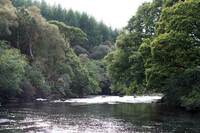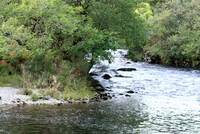- England
- Scotland
- France
- Holland
- Germany
- Italy
- Spain
- Portugal
- USA
- China
- Japan
- India
- Iran
- Advice
- Gardens
- England
- Scotland
- France
- Holland
- Germany
- Italy
- Spain
- Portugal
- USA
- China
- Japan
- India
- Iran
- Advice
- Garden Tours
Book: Landscape Planning and Environmental Impact Design: from EIA to EID
Chapter: Chapter 9 River engineering, channelization and floods
In the heyday of single-objective river engineering, say the century from 1880 to 1980, riverworks were designed according to the principles of structural engineering. The design of embankments, walls and other structures was based on estimates of loads, flows, and pressures. Since then, the behaviour of natural rivers has been studied and engineers have become interested in designs which behave more like natural watercourses. Brookes sees these techniques as 'design with nature', as advocated by McHarg, and as 'reverence for rivers' as advocated by Leopold (Brookes, 1988:189). Bioengineering techniques are used to retain soil and protect against erosion. Particular attention is given to pools, riffles, point bars, floodplains and bank vegetation. Co-operation with ecologists has developed the habitat potential of riverworks (Royal Society for the Protection of Birds, 1994) [Fig 9.19]. The results of this approach are aesthetically better but the works can still lack the romantic beauty which inspired Robert Louis Stevenson to write: Dark brown is the river, Golden is the sand. It flows along for ever, With trees on either hand (R L Stevenson, Where go the boats)

